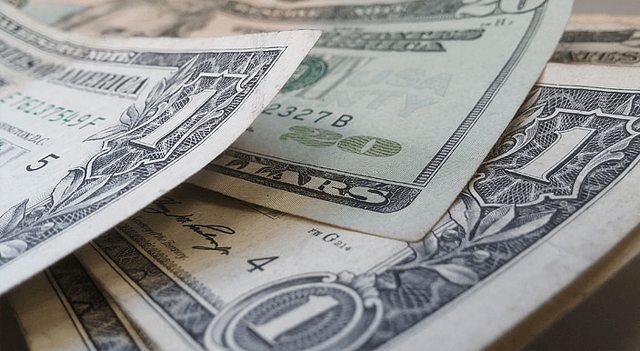The U.S. dollar inched higher on Friday, supported by encouraging employment data, while the Japanese yen gained following a relatively hawkish Bank of Japan meeting.
By 04:00 ET (08:00 GMT), the Dollar Index, which measures the greenback against six major currencies, was up 0.2% at 97.175, recovering from earlier losses that had brought it to a low not seen since February 2022.
Jobs Data Boosts the Dollar
The U.S. dollar benefitted from weekly unemployment claims, which fell last week after a prior spike. Initial claims for state benefits dropped by 33,000 to a seasonally adjusted 231,000 for the week ending September 13. The previous week had seen claims jump to 264,000, a level last recorded in October 2021.
“This was rare positive news on the jobs market, and one that justifies the dollar’s staying bid for now,” said analysts at ING in a note.
The report helped the dollar rebound following the Federal Reserve’s first rate cut of the year on Wednesday and its signal of potentially two more reductions in 2025.
“That said, we still think the dollar is trading too much on the strong side after the Fed meeting and expect some pullback in the coming days. Cheaper funding costs should contribute to fuel hedging demand for the USD and prevent larger appreciative trends,” ING added.
Traders are also monitoring political developments. The U.S. Supreme Court set November 5 for hearings on the legality of Trump’s global tariffs. Meanwhile, Trump has criticized the Fed for not cutting rates more quickly, raising concerns over the central bank’s independence. On Thursday, his administration asked the Supreme Court to allow the president to remove Federal Reserve Governor Lisa Cook, a move without precedent.
Sterling and Euro React to Regional Developments
In Europe, GBP/USD declined 0.5% to 1.3490 after U.K. borrowing exceeded forecasts underpinning government fiscal plans. The day before, the Bank of England kept rates steady and slowed its bond reduction program.
EUR/USD edged down 0.1% to 1.1773 amid political protests in France, where hundreds of thousands marched against austerity measures, urging Prime Minister Sebastien Lecornu to abandon proposed budget cuts.
“Their latest political news isn’t very encouraging, as the new prime minister is facing harsh union opposition to his fiscal plans, and negotiations with the Socialists – who are believed to hold the key to passing the budget – have not yielded good results so far,” ING said.
Yen Gains on BoJ Meeting
USD/JPY fell 0.1% to 147.88 after the Bank of Japan left interest rates at 0.5% as expected. Two of the nine board members, however, supported a 25 basis-point increase. The BoJ also announced plans to start selling its large holdings of ETFs and REITs, signaling a hawkish stance as it trims its balance sheet after nearly a decade of ultra-loose monetary policy.
Other major currencies remained stable. USD/CNY traded near 7.1122, with the yuan close to a 10-month low. Beijing plans additional stimulus to boost private consumption after weak August economic data. AUD/USD slipped 0.1% to 0.6606, after recent 10-month highs, while NZD/USD fell 0.2% to 0.5874, continuing a decline following its largest one-day drop since April due to disappointing Q2 GDP data.
This content is for informational purposes only and does not constitute financial, investment, or other professional advice. It should not be considered a recommendation to buy or sell any securities or financial instruments. All investments involve risk, including the potential loss of principal. Past performance is not indicative of future results. You should conduct your own research and consult with a qualified financial advisor before making any investment decisions.
